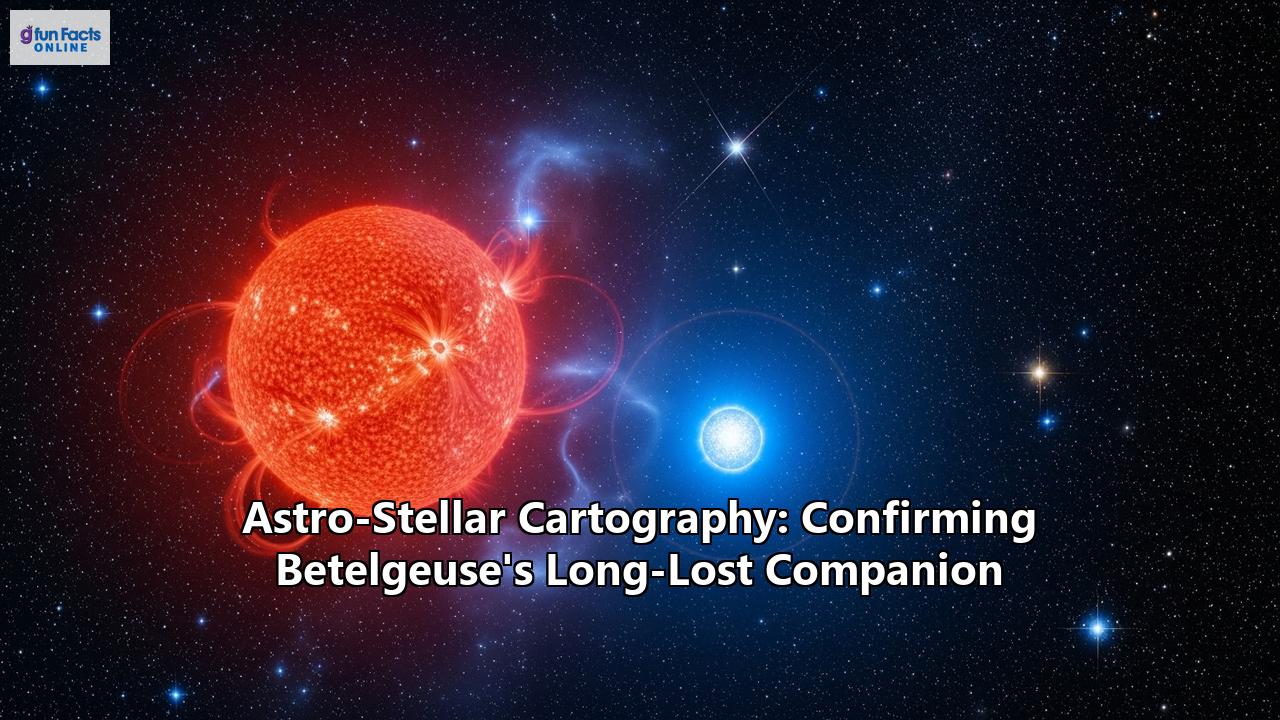A Century-Long Mystery Solved: Betelgeuse's Companion Finally Revealed
For over a century, astronomers have been captivated by the enigmatic behavior of Betelgeuse, the colossal red supergiant that marks the shoulder of the constellation Orion. Its unpredictable dimming and brightening, along with a curious six-year cycle of variability, have long hinted at the presence of a secret companion. After decades of speculation and searching, a team of astrophysicists has finally confirmed the existence of this long-lost stellar partner, a discovery that promises to rewrite our understanding of one of the most famous stars in the night sky.
The breakthrough came from a team led by Steve Howell, a senior research scientist at NASA's Ames Research Center. Using the immense power of the Gemini North telescope in Hawai'i, equipped with a specialized high-resolution camera called the 'Alopeke speckle imager, the astronomers were able to pierce through the overwhelming glare of Betelgeuse and directly image its faint companion. This remarkable feat of astronomical cartography has not only solved a long-standing mystery but has also opened a new window into the lives of massive stars.
The newly discovered companion, nicknamed "Siwarha," meaning "her bracelet" in Arabic, is a relatively small star, estimated to be about 1.5 times the mass of our sun. It orbits Betelgeuse at a distance roughly four times that of the Earth from the sun, completing a full circuit every six years. This orbital period neatly corresponds to the six-year cycle of brightening and dimming that has puzzled astronomers for so long.
A Tale of Two Stars: An Unlikely Pair
The Betelgeuse system presents a fascinating contrast in stellar evolution. While Betelgeuse is a red supergiant in its twilight years, having exhausted the hydrogen fuel in its core, its companion is a hot, young, blue-white star that has yet to even begin the main phase of its life. This suggests that despite being born at the same time, their vastly different masses have dictated dramatically different life paths.
The much more massive Betelgeuse has burned through its fuel at a furious pace, swelling to an immense size that would engulf the orbit of Jupiter if it were placed in our solar system. In contrast, its smaller companion is still in its pre-main-sequence phase, a stellar nursery stage before the onset of sustained nuclear fusion.
The Hunt for a Ghostly Companion: A History of Elusive Clues
The idea of a companion star orbiting Betelgeuse is not new. As early as 1908, astronomers like Henry Cozier Plummer suggested that the star's regular variations in brightness and its wobbling motion, known as radial velocity, could be explained by the gravitational tug of an unseen partner. Over the years, numerous studies have analyzed over a century's worth of data on Betelgeuse's brightness, motion, and position in the sky, all pointing towards the presence of a "little friend."
However, directly observing this companion proved to be an immense challenge. Betelgeuse is one of the brightest stars in our night sky, and its incredible luminosity easily overwhelms the faint light of any nearby object. Even powerful instruments like the Hubble Space Telescope and the Chandra X-Ray Observatory had previously failed to detect the elusive star.
The key to the recent discovery lay in a technique called speckle imaging. This method involves taking thousands of very short exposures to freeze the blurring effects of Earth's atmosphere. When combined with the light-gathering power of the 8.1-meter Gemini North telescope, this technique allowed Howell's team to achieve the high resolution necessary to distinguish the faint companion from the glare of its giant primary. The detection was made at the very limits of the telescope's capabilities, a testament to the power of modern astronomical instrumentation.
A Dance of Doom: The Inevitable Fate of Betelgeuse's Companion
The discovery of Siwarha has provided a compelling explanation for Betelgeuse's six-year variability, but the story of this stellar duo is far from over. The companion star is on a perilous journey, orbiting so close to Betelgeuse that it is actually skimming through the supergiant's extended outer atmosphere.
This close proximity is not destined to last. The immense gravity of Betelgeuse is slowly but surely pulling its smaller companion inward. Astronomers predict that within the next 10,000 years, Siwarha will be completely consumed by Betelgeuse in a dramatic act of stellar cannibalism.
This impending merger could have spectacular consequences, potentially leading to a massive expulsion of material as the cores of the two stars combine. The question remains whether Betelgeuse will explode as a supernova before this cosmic collision occurs.
Unlocking the Secrets of Supergiants
The confirmation of Betelgeuse's companion is more than just the solution to an old astronomical riddle. It provides a crucial piece of the puzzle in understanding the evolution and behavior of red supergiant stars. The periodic changes in brightness observed in other similar stars may also be attributable to the presence of close companions.
The study of this unique binary system will continue to provide valuable insights into the complex interplay between stars of vastly different sizes and evolutionary stages. Future observations, particularly in November 2027 when the companion reaches its maximum separation from Betelgeuse, will offer another opportunity to study this fascinating pair in greater detail. The discovery of Siwarha is a powerful reminder that even the most familiar objects in our night sky can still hold profound secrets, waiting to be unveiled by the relentless march of scientific discovery.
Reference:
- https://skyandtelescope.org/astronomy-news/does-betelgeuse-have-a-companion-star/
- https://www.sciencenews.org/article/betelgeuse-hidden-companion-star
- https://www.sciencedaily.com/releases/2025/08/250812234610.htm
- https://www.miragenews.com/betelgeuses-companion-star-discovered-after-1514271/
- https://www.jpl.nasa.gov/news/nasa-scientist-finds-predicted-companion-star-to-betelgeuse/
- https://www.nasa.gov/science-research/astrophysics/nasa-scientist-finds-predicted-companion-star-to-betelgeuse/
- https://www.livescience.com/space/astronomy/astronomers-share-best-ever-evidence-that-betelgeuse-has-a-secret-companion-star-and-theyve-nicknamed-it-her-bracelet
- https://mashable.com/article/betelgeuse-companion-direct-detection-image?test_uuid=003aGE6xTMbhuvdzpnH5X4Q&test_variant=a
- https://www.space.com/astronomy/astronomers-crack-1-000-year-old-betelgeuse-mystery-with-1st-ever-sighting-of-secret-companion-photo-video
- https://www.youtube.com/watch?v=6OYZU-hXDC8
- https://en.wikipedia.org/wiki/Betelgeuse

